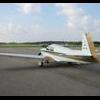Lower Cowl closure mod and CHTs
-
Members Online
- dzeleski
- Ragsf15e
- CCAS
- M20F-1968
- 65MooneyPilot
- buddy
- bluehighwayflyer
- RangerM20
- Dammit Bill
- Rick Junkin
- FlyingDude
- EricJ
- HIghpockets
- Bob7point7
- Jake@BevanAviation
- gabez
- Aaviationist
- 201er
- Nico1
- TBILL
- ArtVandelay
- eman1200
- MatthiasArnold
- jetdriven
- slowflyin
- Danny
- Aleksei
- GeeBee
- Rusty Pilot
- Hank
- TCC
- SKI
- BDCooper
- Danb
- chrisburdzy98
- Skyland


Recommended Posts
Join the conversation
You can post now and register later. If you have an account, sign in now to post with your account.